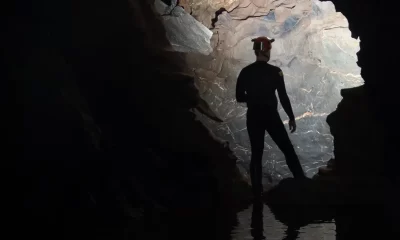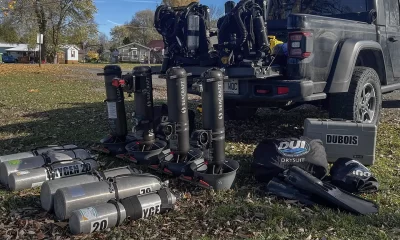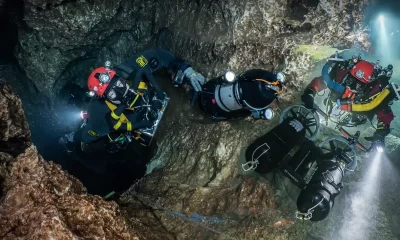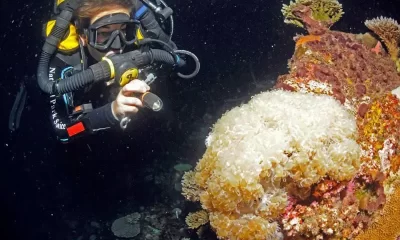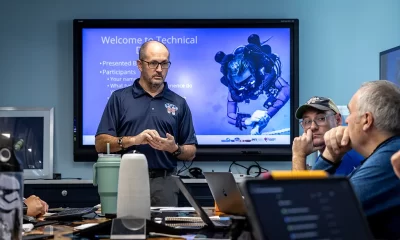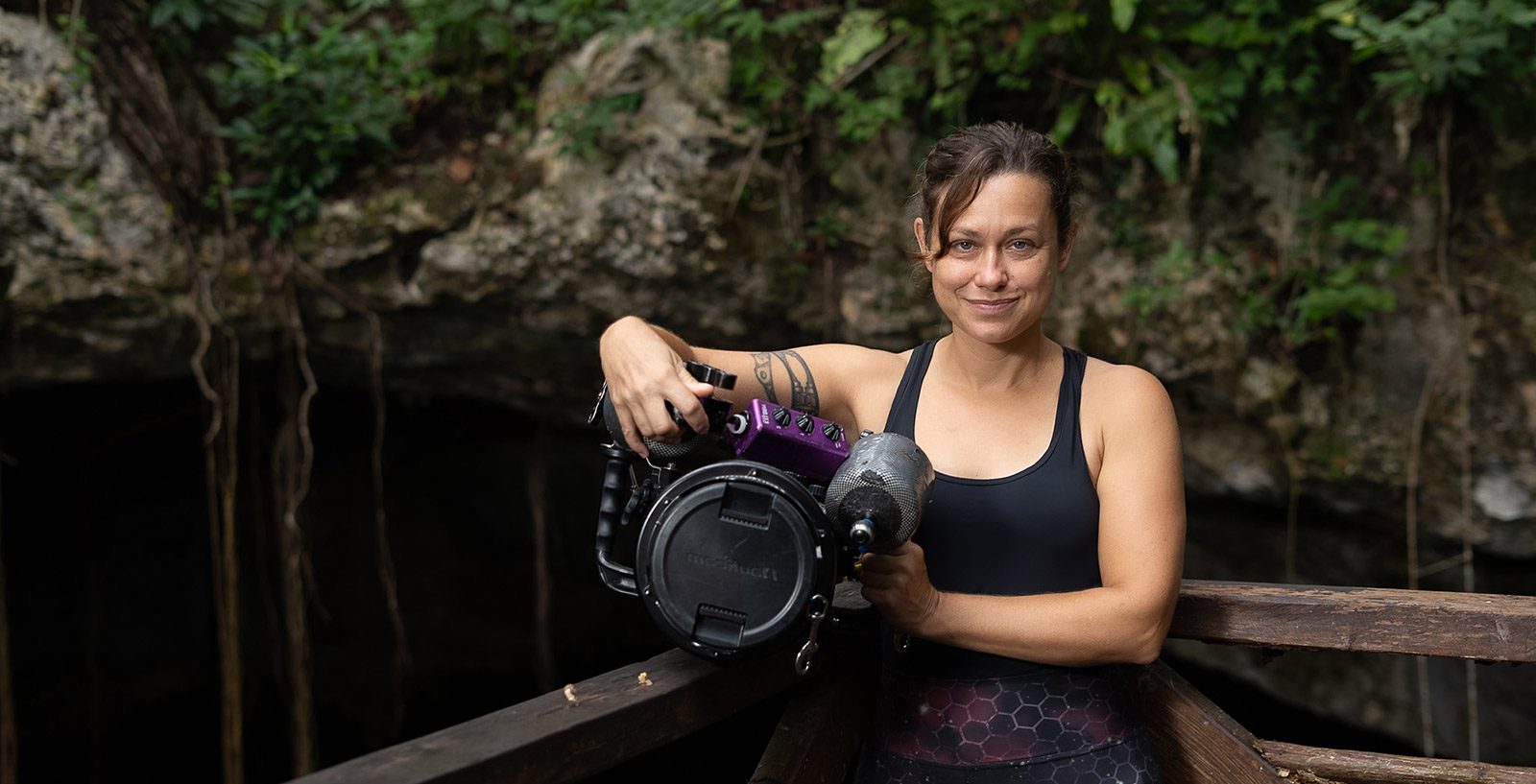
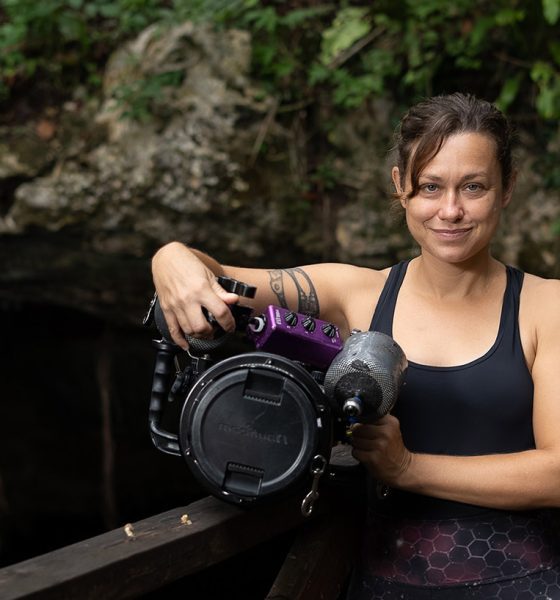
Cave
Meet Explorer Natalie Gibb
She’s one of the bright lights in the cave diving firmament. Meet 41-year old author, picture maker, dive center owner, cave instructor trainer, and prodigious explorer Natalie Gibb. She was recently inducted into the Women Divers Hall of Fame in recognition of her work discovering 20 new Mexican caves with partner Vincent Rouquette-Cathala, and also for training the next generation of cave divers. Here Evan Kornacki profiles the diminutive 150 cm tall firebrand and sidemount advocate who is blazing a trail for others to follow.
By Evan Kornacki. Header image: Natalie Gibb holds her camera in front of Cenote Sagrado after a dive in Tajma Ha by Rory O’Keefe.
In 2019, Natalie Gibb was hundreds of feet inside an underwater cave she had just discovered, in zero visibility, when she experienced a moment all cave divers dread: The line she had placed in the cave to guide her to her exit went completely slack.
“I just sat there, frozen still,” Gibb said. “I felt my heart rate increase; my breathing rate increase. I had a physiological fight or flight response. I was no longer in control.”

Gibb stopped and steadied herself. She sat for five minutes, until she could feel her heart rate drop, notice her breathing slow to normal, and feel her hands again. She carefully started trying to envision the cave, and followed the slack line without pulling on it. Soon she discovered that the stalagmite to which she had tied the line had broken off. Thankfully, the rest of the line was intact, guiding Gibb out of the tunnel. “I named the cave Medusa,” Gibb said of her discovery, “It’s twisting and turning and dangerous, like Medusa’s snakes.”
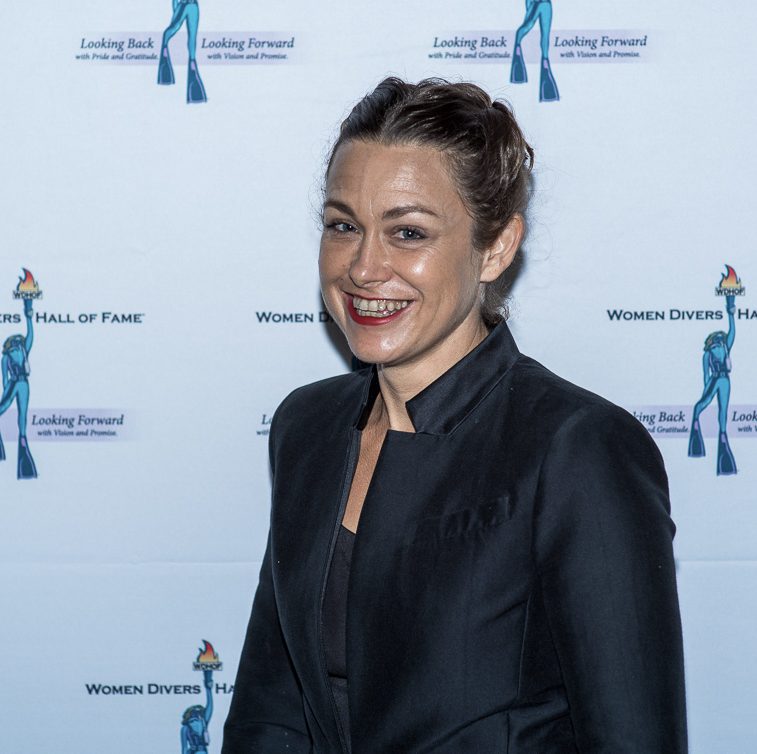
Meet 41-year old Natalie Gibb; author, public speaker, cave explorer, underwater photographer and videographer, and TDI Instructor Trainer and cave and sidemount instructor. During a black-tie dinner at the 2022 DEMA Show she was inducted into the Women Divers Hall of Fame, (WDHOF), which honors “the contributions of women pioneers, leaders and innovators in the many fields of diving.” The 150 cm/4 ft 11 in. educator was honored not only for discovering 20 new underwater caves and surveying more than 90 km / 56 mi of cave passages with her exploration partner Vincent Rouquette-Cathala, but also for her ongoing efforts to develop the next generation of cave divers, instructors, explorers, and scientists in Quintana Roo, Mexico.
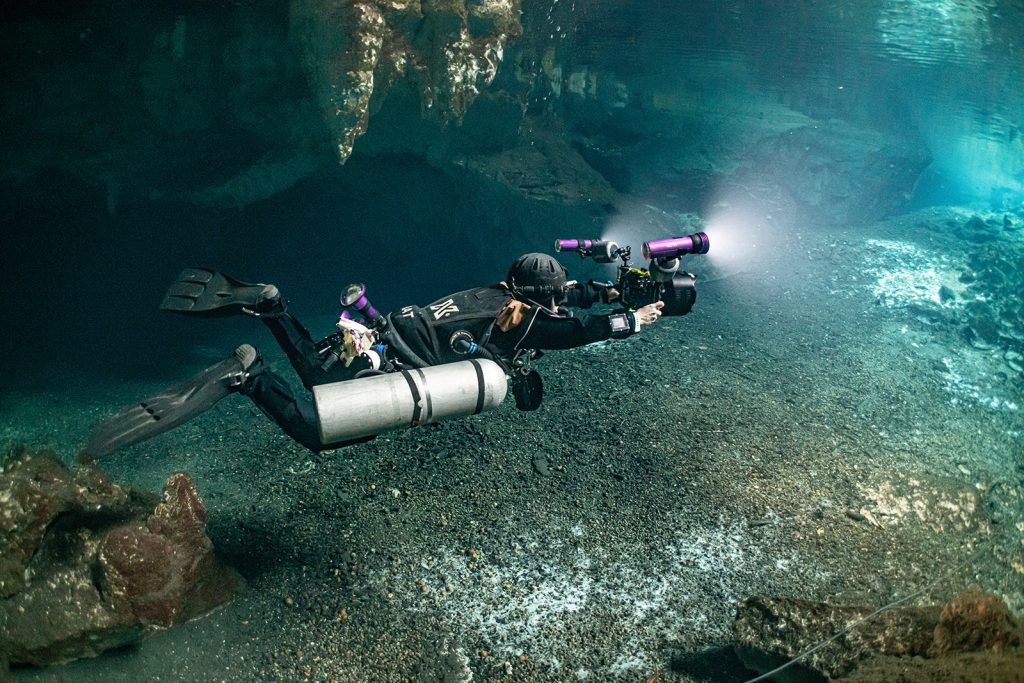
Learning To Dive
Growing up in the 1980’s in Orange County, California, Natalie was always outdoors, saying, “I had an amazing childhood. I was basically always outside exploring Orange County all day, every day, in the summer and was given a lot of freedom to run around by myself with my friends. And I think that was probably formative in my sense of adventure.” After graduating from the University of San Francisco in 2003 with a degree in biochemistry, she moved to New York City. But it wasn’t until an impromptu vacation to Key Largo, Florida, that she stumbled into an open water class at John Pennekamp Coral Reef State Park. She signed up for an open water scuba class where she took her first breaths on a regulator, and was hooked. “It was life changing,” she now says. “ She had found what she wanted to do with her life.
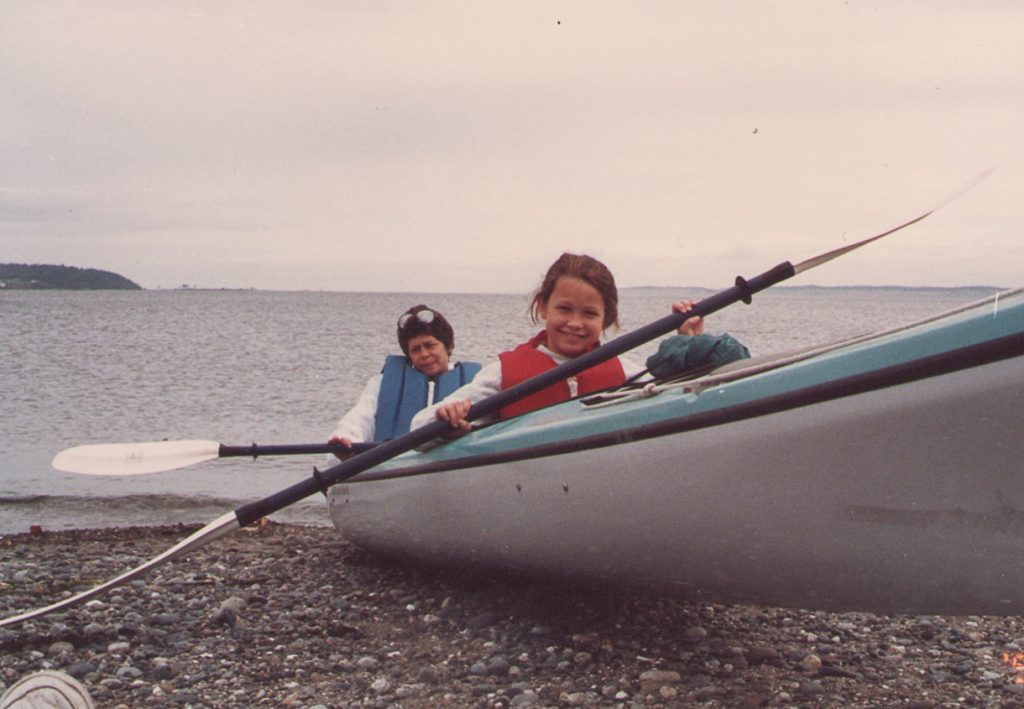
After informing her family back home in California of her newfound passion, Natalie returned to New York, determined to continue her diving education even in the challenging conditions of the Northeast.
After being accepted by a local diving community, Natalie started diving in the North Atlantic. “I would go down, like 60 or 80 feet (18 or 24 m) with my similarly certified advanced open water buddy and hang out on the shotline and, if the visibility was good enough, we’d watch the tech divers go past us. And sometimes you could just barely see the top of the wreck that they were diving, and we would just hang out there.” But she didn’t feel left out, “I didn’t care. I just wanted to be underwater.”
In 2006, she was offered a coral reef chemistry internship in Akumal, Mexico, and believed she’d finally found an opportunity to combine her degree in biochemistry with her newfound love of diving. “But when I got there, they had canceled the internship and hadn’t told anybody about it because the nonprofit was actually embezzling money.”
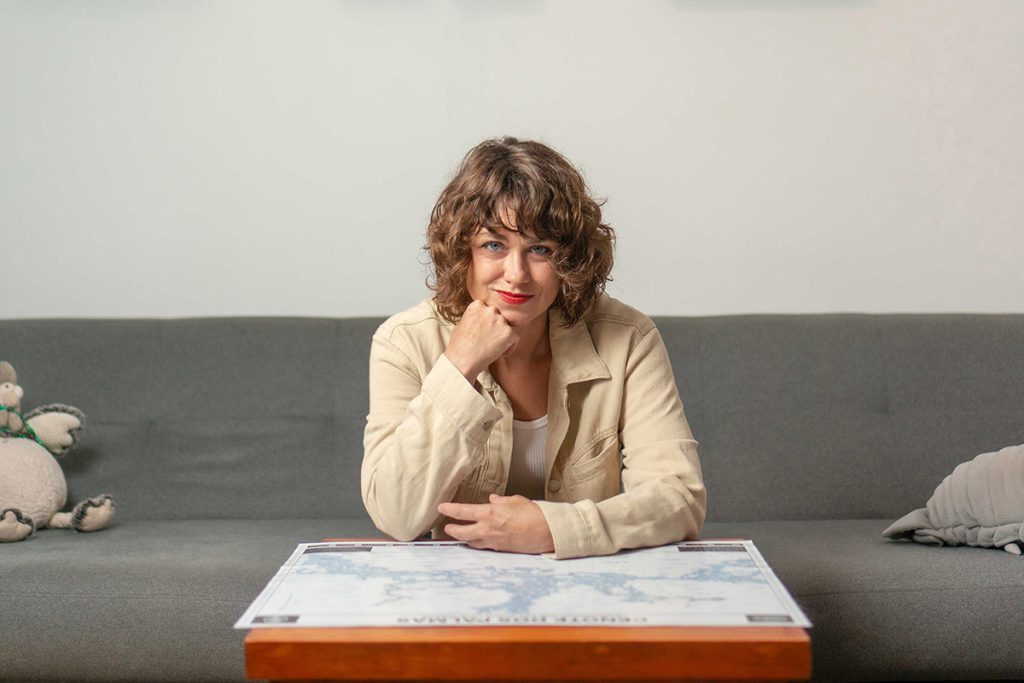
Figuring she’d make the best of a bad situation, she signed up for a divemaster course at Akumal Dive Shop. A few weeks later, her life would take a dramatic shift when she was invited to audit a cavern tour as part of her divemaster course.
“Twenty seconds into that dive I was like, ‘That’s it! I’m going to be a cave diver, I want to own a cave diving center, I’m going to teach cave diving, and someday I want to explore caves!’” But, she faced some significant hurdles, not least of which was the machismo culture that pervaded cave diving in the early 2000s. However, Natalie wouldn’t be deterred, all 4 feet 11 inches/1.49 meters of her standing up to the pushback she received from the local guides, recalling, “These very strong tall male cave divers were like, ‘Haha! How are you going to pick up the doubles?’ But I did it anyway!”
With the aim of becoming a professional cave instructor, Natalie decided to stay in Mexico and start her scuba career by becoming an open water instructor. She began working for Dressel Divers near Puerto Aventuras, teaching back-to-back open water classes.
Which Way to the Underground?
After teaching open-water students for a year-and-a-half, Dressel Divers refused to allow Natalie to work in cavern tours and cave diving due to her size and gender.
She quit, changed jobs, and found a new home at Aquanauts in Puerto Aventuras, where she had the opportunity to work in the cenotes. Unfortunately, the dive shop changed ownership, and Natalie was faced with a tough choice: “I had the option to be a freelancer where I could actually get jobs in cave diving, or take one of the job offers I had as an open water instructor. It was super difficult to not go take the jobs that would make me financially secure.”
Instead, she decided to follow her heart, first working as an independent cavern guide, progressing on to become a cave instructor.
According to Natalie, she met precious few women working in the cave diving industry along the way, noting, “There weren’t really a lot of women teaching at that point. There was Bernadette Carrión, and there was Emanuela Bertoni. But really, I just kind of did my own thing. If I have to be 100% honest,” she said, noting that the sport has had many women pioneers, especially in Mexico: “Look at the Nohoch Nah Chich map, this huge exploration project; I think about 40% of the divers on that project were women. The thing is, they weren’t out there beating their chests and promoting themselves to that level that the guys were. So, I think they just got overlooked.”
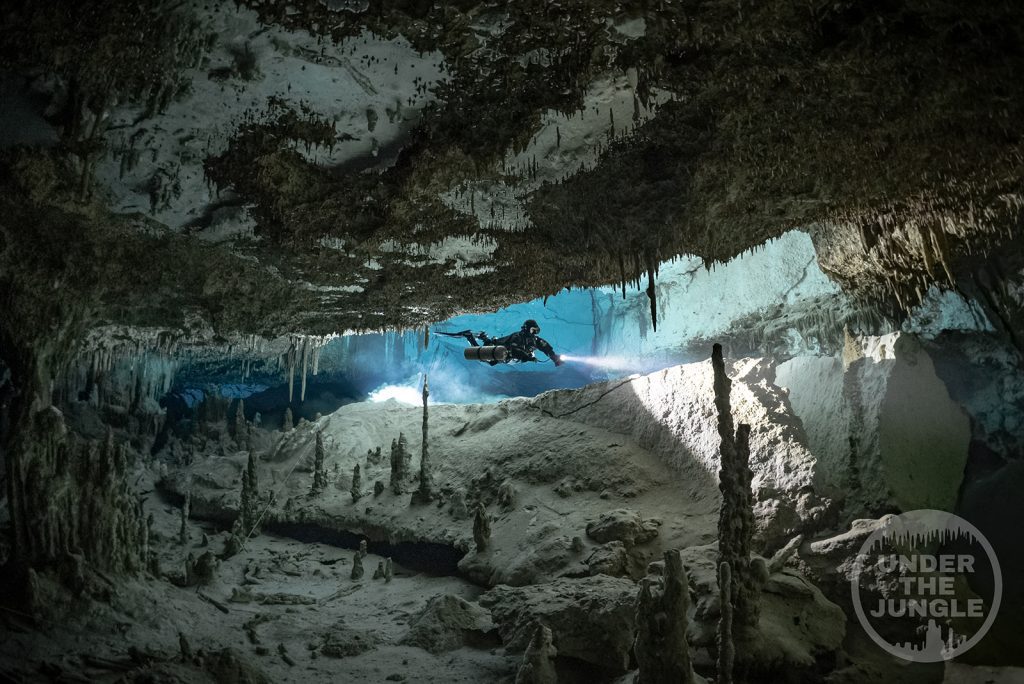
Over the next few years, Natalie would make a connection that would impact the rest of her career. The first was in 2008 when she was introduced to another aspiring cave explorer, Vincent Rouquette-Cathala. They began diving together, and one night, over drinks in Playa del Carmen, Natalie and Vincent made a drunken pact to spend “every last dime we had exploring caves together.”
The two went about searching for new leads to explore in the Yucatan Peninsula, one of the most successful being Sistema Pandora, which today boasts over 16 km/10 mi of surveyed passages. Unlike the better-known systems of Ponderosa, Sac Actun, and Ox Bel Ha, Pandora is known as a microbial cave—a truly alien environment which, as Natalie describes it, “has microbial straws and web growths on the walls, and there’s dunes of microbial goo on the floor, which is like really light, fluffy Jell-O … which is toxic. It burns your skin because it’s full of hydrogen sulfide.”
After reaching the limits of penetration possible with multiple stages and scooters, they shifted their focus to searching for alternate entrances on land. And they found them.
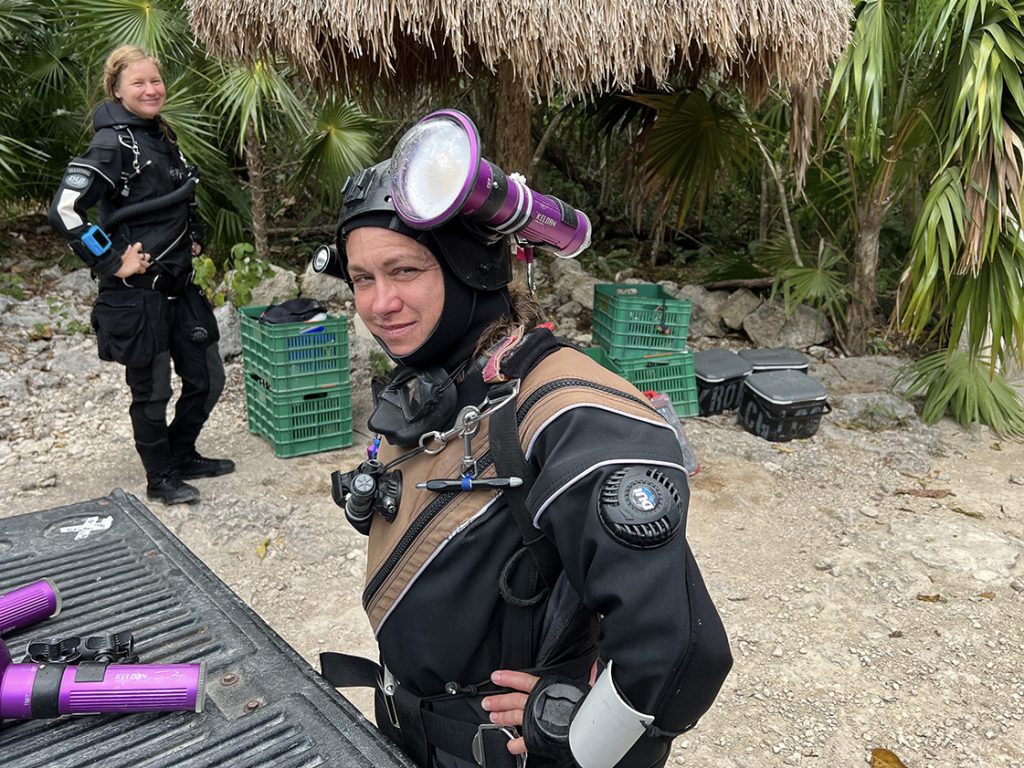
Venturing into the Dive Business
In 2016, after years of planning, Natalie and Vince opened “Under the Jungle,” a cave diver training center in Xpu Ha, Mexico. The joint venture has thrived in a market where many businesses fail. But, when pressed for the secret to their success, Natalie admits, “I have no idea! I am shocked every time someone shoots us an email. I am constantly terrified that I will not have work again, ever, and that I won’t have work to support my staff. It’s the most stressful thing I’ve ever done in my life.”
Despite her anxiety, the shop saw a steady stream of business, allowing Natalie and Vince to save up enough money to weather a storm no one knew was coming: “I had aggressively saved a lot of money compared to what the shop would make in a month. So, when COVID hit in 2020, I had money, and I was able to pay our full-time employees their normal rate. All the way through the pandemic, I could pay rent and, after things reopened, I didn’t pay myself anything for two years to recoup the savings.”
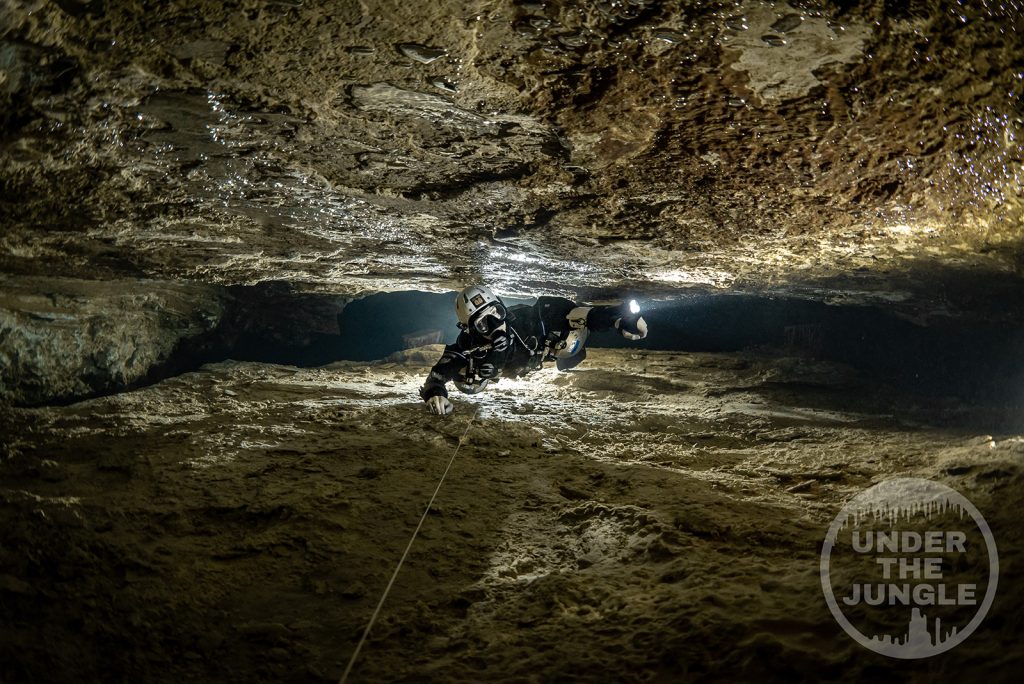
Protect What You Love
One afternoon, while dropping off her latest survey data at the Quintana Roo Speleological Society main office, cave diving pioneer Bil Phillips introduced Natalie to one of his protégés, Dr. Patricia Beddows, a geologist from Northwestern University. Natalie was immediately impressed: “Here was Trish: She’s about my height, just, like, completely covered in mud, swearing, and she was hauling doubles out of the back of her sedan. And I thought, ‘She’s so cool!’”
After Bil’s sudden death in 2017, Natalie offered Under the Jungle as a logistics hub for Dr. Beddows’s Cave Pearl Project. “I sort of offered to hold all her stuff for her. And then from there, we started collaborating more strongly. And now we actually do a Science Week every year, which is a way for my former students to come back and help out.” Together, Natalie and her students have participated in a variety of projects with Dr. Beddows, including flow meter placement, water sampling, sediment and rock collection, and discharge calibration.
Some of the microbes collected have been found to contain DNA from ancient single-cell organisms. One of her proudest moments was when she learned that surveys of one of their projects were being used by geologists to argue for sustainable development in the area surrounding the cave. To have contributed to that effort was “one of the most rewarding things I have ever experienced.”
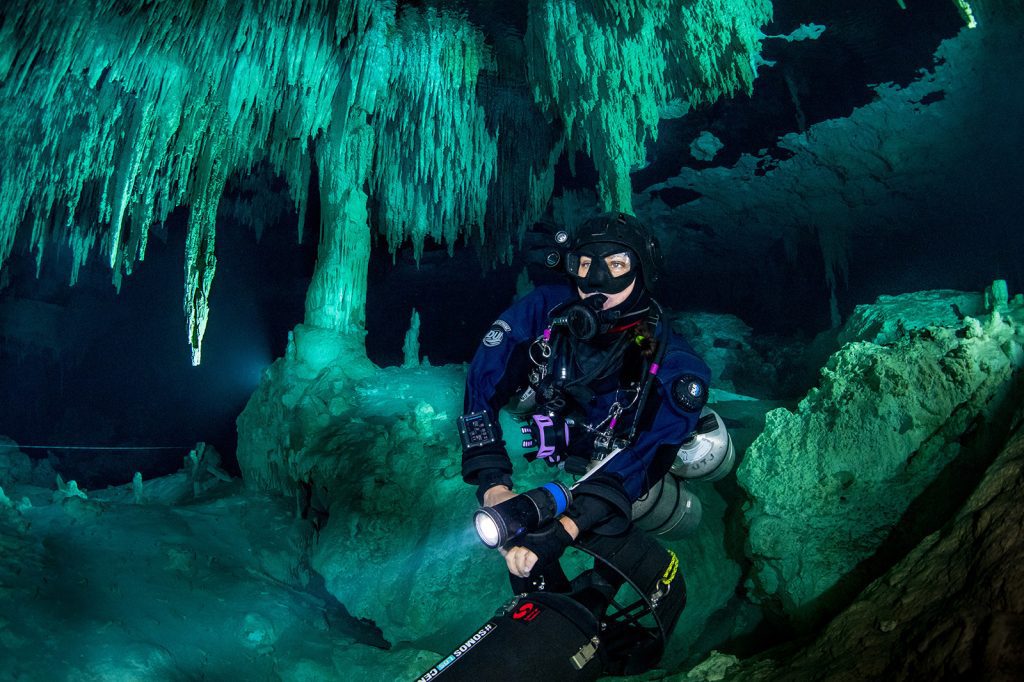
When asked what’s next in store for her, Natalie mentions her desire to protect the environment that she loves so much. “My dream life goal is to create a nonprofit cave conservation organization in Mexico.” Inspired by the North Florida Springs Alliance, Natalie couldn’t believe that nothing similar existed to protect the cenotes in her backyard. “If I can have one or two places that I have the power to preserve, I’m gonna go for it! And even if it crashes and burns, I have to try.”
Dive Deeper
Stories by Natalie Gibb:
InDEPTH: Cameras Kill Cavers… Again by Natalie Gibb
InDEPTH: Zen and the Art of Mexican Cave Navigation by Natalie Gibb
Insure and Go: “Diving in the Dark” by Natalie Gibb
Shearwater Blog: EXTREME (AND NOT SO EXTREME) MULTISTAGE SIDEMOUNT CAVE DIVING WITH AI

Evan Kornacki is a GUE assistant instructor from the United States. He began diving at The University of Texas at Austin, where he earned a bachelor’s degree in physics. His photographs have been featured in Alert Diver magazine and InDEPTH. He has participated in Project Baseline, the Mexico Cave Exploration Project, and the Woodville Karst Plain Project. Evan lives in Florida and is an active member of Southeast Underwater Explorers.



















